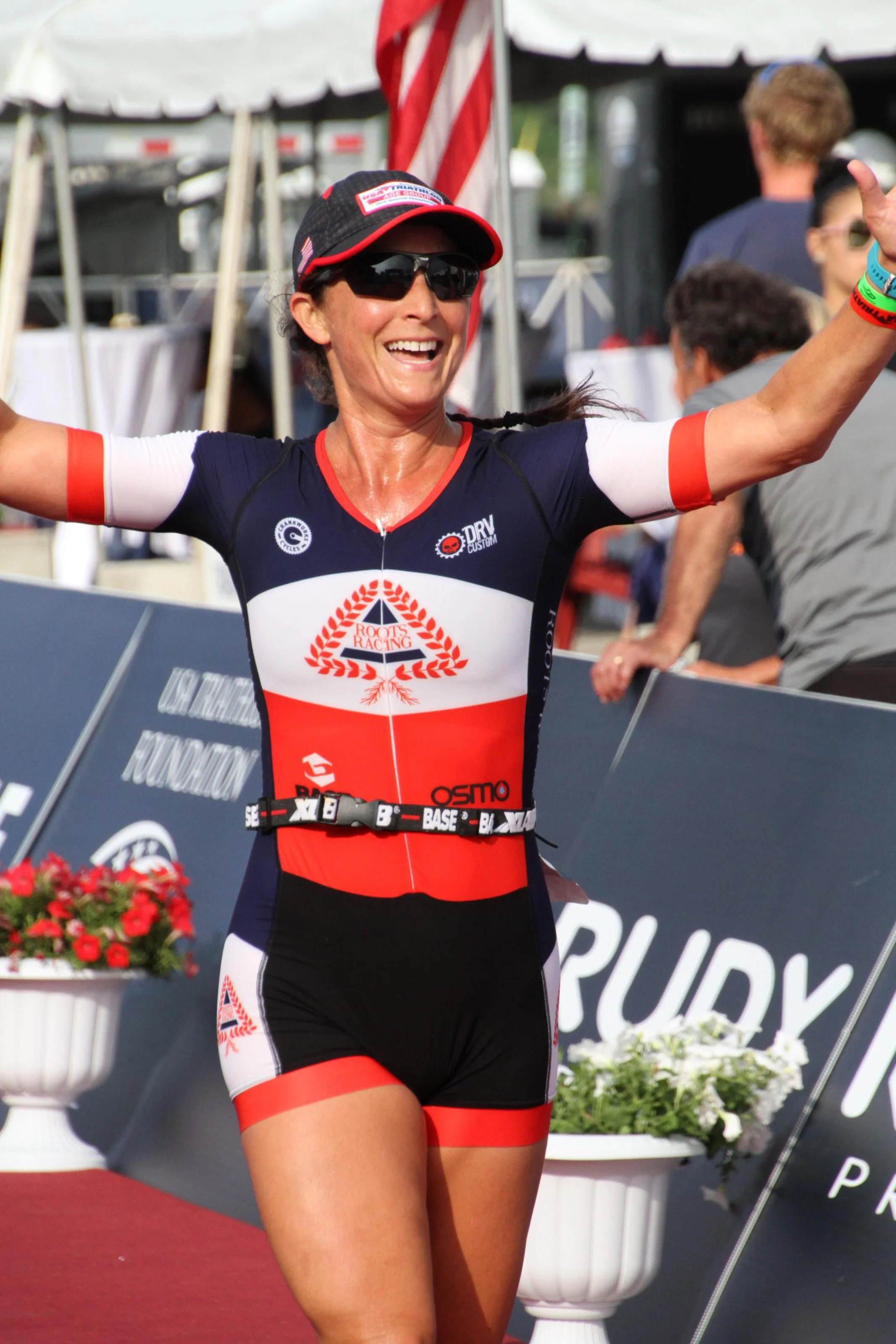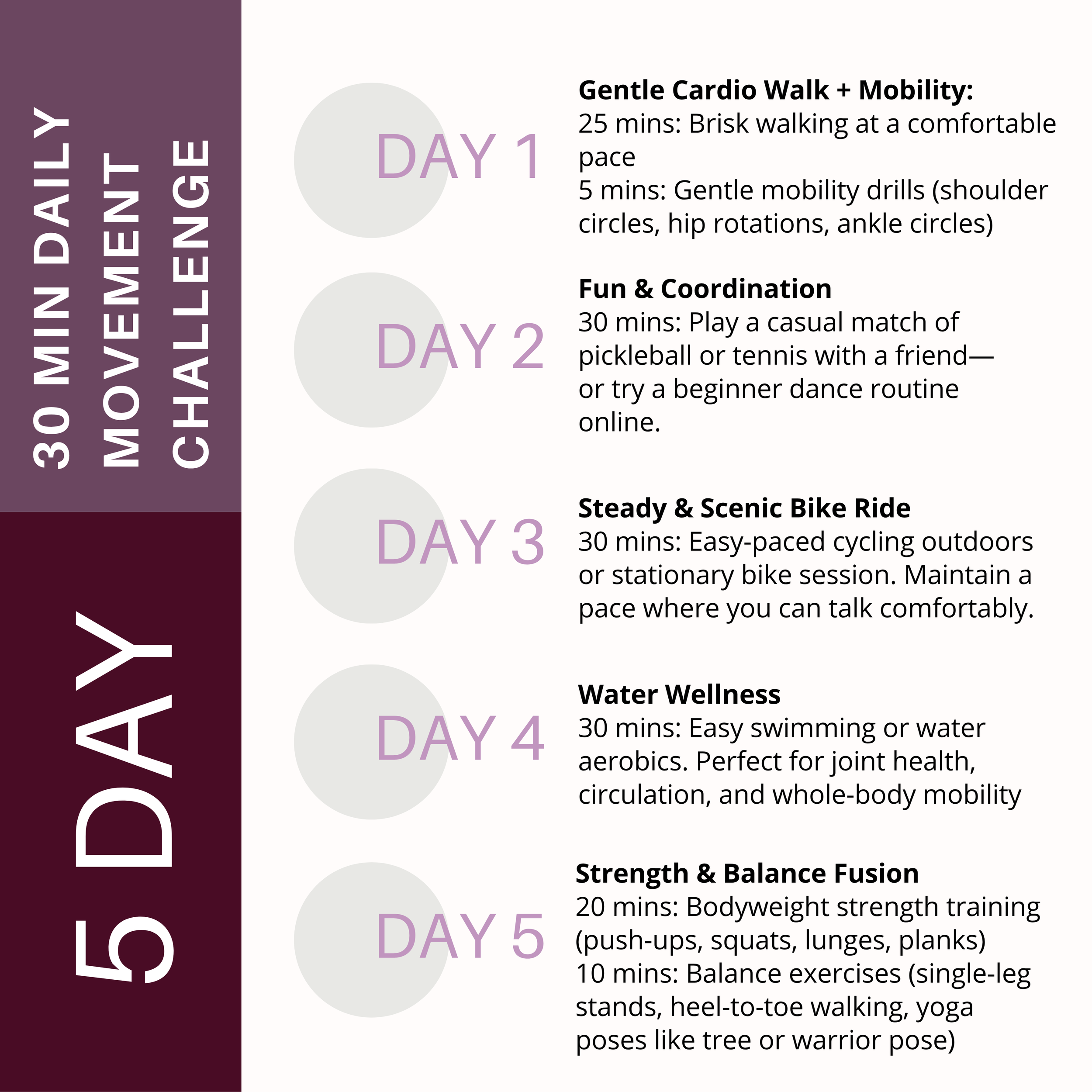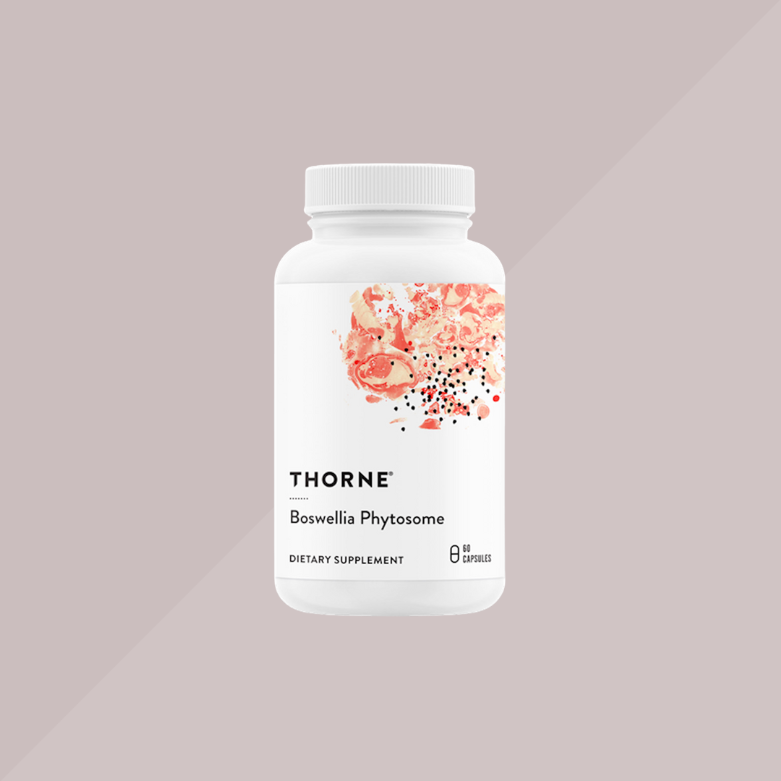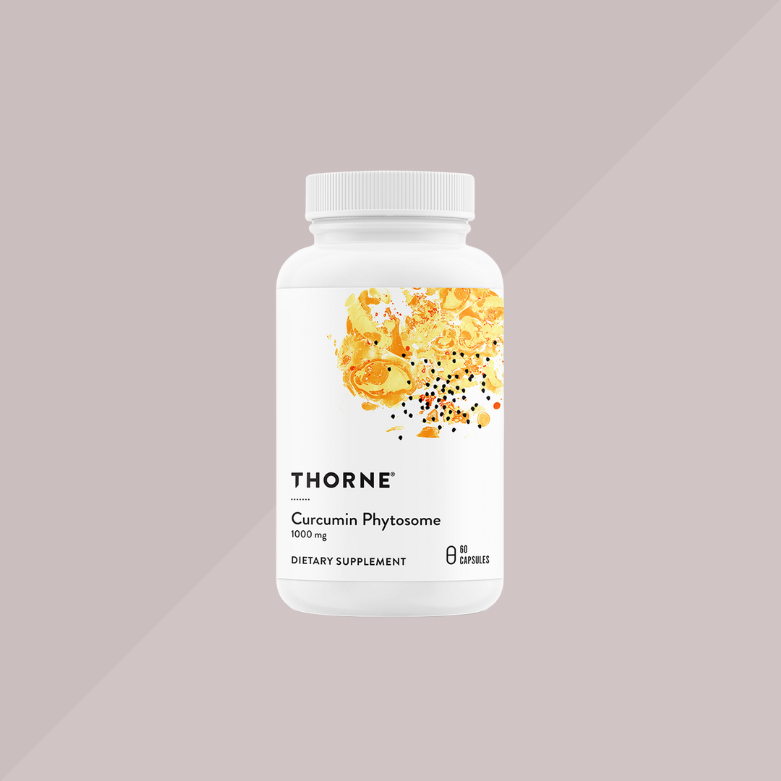What If Movement Was the Most Underrated Medicine of All?
Every now and then, a study comes along that doesn’t just validate what we’ve suspected — it reframes the entire conversation.
A good friend and fellow triathlete of mine has Stage 4 cancer, and he’s been courageously battling it for the past 10 years. He recently shared this groundbreaking study on exercise, highlighting that his oncologists have always been amazed by how long and resiliently he’s been living with his diagnosis. Even during his toughest days, he finds the strength to walk on his treadmill or pedal his indoor trainer. His commitment to movement isn't just inspiring—it's a profound testament to how dedication to staying active is keeping him alive and healthy as he can be even with his diagnosis.
Last week at the ASCO 2025 oncology conference, a decade-long international trial shook the medical world. For the first time in history, researchers presented high-level evidence that exercise could reduce the risk of cancer recurrence and death more effectively than many currently approved drugs.
Patients who followed a structured movement plan had:
a 28% lower risk of cancer recurrence, and
a 37% reduction in all-cause mortality over eight years.
As Dr. Julie Gralow, ASCO’s Chief Medical Officer, said:
“We titled the session ‘As Good as a Drug.’ I would have retitled it ‘Better than a Drug,’ because you don’t have all the side-effects.”
Let that sink in.
These are results drugs often aspire to — yet here they are, from walking, movement coaching, and staying physically engaged post-treatment.
And while this study focused on colon cancer survivors, the implications are bigger for all of us.
Movement is medicine.
Inflammation is modifiable.
And your daily choices — how you eat, move, breathe, and recover — are far more potent than we’ve been led to believe.
In this week’s NEST, we’ll explore what this means for you, right now — through the lens of Nutrition, Exercise, Stress, and Targeted Supplementation — so you can start using the same tools that helped participants not only survive, but thrive.
N: Nutrition – Inflammation Is a Personal Story
When most people think of anti-inflammatory diets, they think of turmeric, salmon, blueberries, olive oil. And sure — those foods are helpful. But here’s what’s often missed...
Inflammation doesn’t look the same in everyone.
And neither should the diet designed to lower it.
The recent ASCO study showed that an anti-inflammatory diet paired with movement improved long-term outcomes — but what stood out most to me was this...
There’s no one-size-fits-all food plan.
What reduces inflammation in one person might trigger it in another.
That’s where personalized nutrition comes in. It’s why I use the Mediator Release Test (MRT) in my practice — a tool that identifies how your immune system responds to specific foods and food chemicals, highlighting which ones are silently stoking the fire inside.
Because even “healthy” foods — spinach, garlic, avocado, oats — can create a low-grade immune reaction in the wrong body. And when that’s happening day after day, it’s like constantly tripping your internal smoke alarm.
With MRT, we can stop guessing. We see your unique inflammatory blueprint and design a nutrition plan based on what your body actually tolerates and thrives on.
Not an anti-inflammatory diet in theory — but in practice.
Actionable Tip: Noticing How You Feel
This week, notice how you feel after your meals. Try keeping a short log — what you ate, and how your energy, focus, or digestion felt 1–2 hours later.
If you feel foggy, bloated, wired, or tired — it may be time to explore food sensitivities that aren’t obvious.
Build meals with a mix of anti-inflammatory staples:
Wild salmon or pastured chicken
Steamed zucchini or bok choy
Sprouted quinoa or Japanese sweet potato
Olive oil or avocado
Fresh herbs like cilantro, basil, or parsley
Simple. Balanced. Easy on your gut and your immune system.
Why this matters: You can't heal inflammation with guesswork. And food — while powerful — can only help if it’s the right foodfor your body. Personalized nutrition moves you from trial-and-error to strategy — and that’s when real healing begins.
E: Exercise – What If This Was the Strongest Prescription You Never Got?
The ASCO 2025 trial changed the conversation.
In this groundbreaking study, stage III colon cancer survivors were enrolled in a structured, moderate-intensity exercise program.
Here was the outcome:
A 28% lower risk of cancer recurrence
A 37% reduction in all-cause mortality
These results rival — and in some cases, outperform — pharmaceutical interventions! And while this research focused on cancer survivors, it echoes what functional medicine has long embraced...
That movement changes biology.
It reduces inflammation, balances blood sugar, supports immune regulation, and stimulates healing — not just in theory, but in measurable, cellular outcomes.
The exercise program used in the study wasn’t extreme. It was 150 minutes per week of moderate-intensity movement — like brisk walking — spread over five days. That’s 30 minutes a day. No gym required. No expensive gear. Just commitment.
It’s not just how much you move. It’s how consistently you show up.
Actionable Tip: Aim for 30 Minutes of Steady Movement, 5 Days This Week
Start with 5 days this week of 30 minutes of moderate movement. Walking, dancing, swimming, biking — anything that gets your heart rate gently elevated and keeps you moving at a pace where you can still talk, but not sing.
Already doing that?
Layer in variety:
Add in 1 day of strength training
Try a coordination-based workout (pickleball, tennis, or dance)
Or finish your walk with a few minutes of mobility or balance drills
Why this matters:
Exercise is more than calorie burn. It signals your cells to repair, your brain to grow, your gut to regulate, and your stress response to recalibrate.
It’s not a backup plan — it’s frontline therapy for longevity, vitality, and inflammation control.
S: Stress – You Can’t Heal in Survival Mode
We often think of inflammation as a food or injury issue — but chronic stress is one of the most overlooked inflammatory triggers.
When your nervous system stays in fight-or-flight, cortisol levels stay high. Over time, this blunts your immune regulation, disturbs gut function, impairs detox pathways, and turns even small stressors into internal wildfires. It’s not dramatic stress that does the most damage — it’s the low-grade, never-ending drip of worry, hypervigilance, and pressure that rewires the brain and body into chronic defense mode.
And the data keeps confirming: you can’t down-regulate inflammation without down-regulating your stress response.
But you don’t need a 90-minute yoga class or a perfect morning routine to shift your state. Your biology listens to small cues of safety — and those cues, when repeated, are what flip the switch from survival to healing.
Actionable Tip: Interrupt the Cortisol Loop with a Midday Stress Reset
Set a timer or calendar alert for one intentional pause during your day — ideally mid-afternoon, when cortisol naturally dips.
Step outside, stretch your arms overhead, or simply place your hand on your chest and slow your breath.
Even two minutes of intentional grounding — outside of your usual hustle — can reset your nervous system, shift your posture, and send a powerful message to your brain: we’re safe now.
Why this matters: Chronic stress isn’t just a mood issue — it’s an inflammatory one. When you train your nervous system to come out of defense mode more easily, you reduce internal wear and tear, improve immune regulation, and create the internal conditions needed for healing, clarity, and long-term resilience.
T: Targeted Supplementation – Reduce Inflammation from the Inside Out
Movement is healing. But without proper recovery, even helpful stressors can tip the system into breakdown instead of repair. Inflammation is your body’s way of adapting — but when it lingers, it slows healing, stiffens joints, and dulls energy.
That’s why smart supplementation matters — especially when you’re training harder, aging gracefully, or managing a chronic inflammatory load.
Curcumin Phytosome — a bioavailable form of turmeric that helps reduce joint stiffness, protect muscle tissue, and modulate inflammatory signaling across the brain, gut, and liver
Boswellia Phytosome — a full-spectrum boswellia extract bound to phospholipids for 3–7x higher plasma levels and up to 35x higher tissue levels, offering powerful support for joints, tendons, respiratory health, and brain tissue protection
This is deep cellular support — without the downsides of chronic NSAID use.
Actionable Tip: Stack Curcumin + Boswellia Phytosomes to Support Recovery After Exercise or Stress
After workouts or long days on your feet, take Curcumin Phytosome and Boswellia Phytosome together with a meal that includes fat to enhance absorption. This duo helps your joints stay mobile, your muscles repair faster, and your immune system remain balanced — not overreactive.
Great for midlife bodies, active lifestyles, or anyone trying to reduce the inflammatory drag on their system.
Disclaimer:
The supplement recommendations shared in this newsletter are for general informational and educational purposes only. They are not intended to diagnose, treat, or replace personalized medical advice. Please consult your healthcare provider before starting any new supplements, especially if you have underlying health conditions or are taking medications.
What You Do Daily Becomes the Medicine of Tomorrow
The new research out of ASCO isn’t just about exercise. It’s a reminder that the most powerful interventions don’t always come in a bottle or a prescription. Sometimes they look like a walk. A breath. A plate of food your body actually tolerates. The right support at the right time.
And when that’s personalized to your biology — not just generic advice — the results are transformative.
That’s what I help my clients create.
Personalized wellness strategies that lower inflammation, support energy, improve recovery, and help you feel more like yourself again — naturally and intelligently.
If you’re ready to explore how your body is really responding to food, movement, and stress, I invite you to learn more about my Midlife Wellness Reboot program. We use functional lab testing like MRT, targeted supplementation, and lifestyle design to build a plan that supports your health now — and for decades to come.
If you’re ready to work with someone who sees the whole picture, click below to explore the program or book a free discovery call.
Let’s Spread the Word
Know someone who could benefit from a fresh perspective on their health in the new year?
Share THE NEST NEWSLETTER with friends and family.








